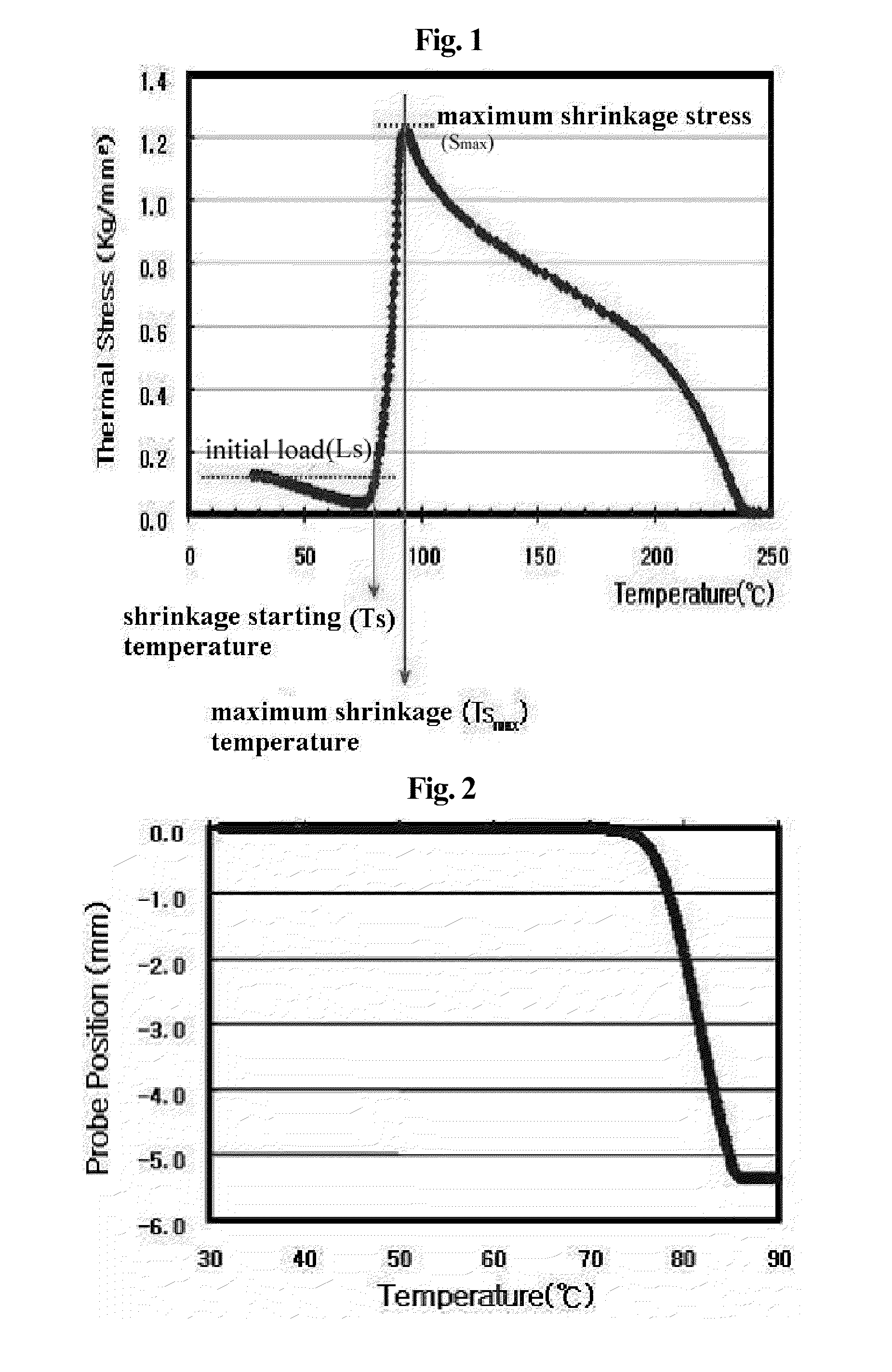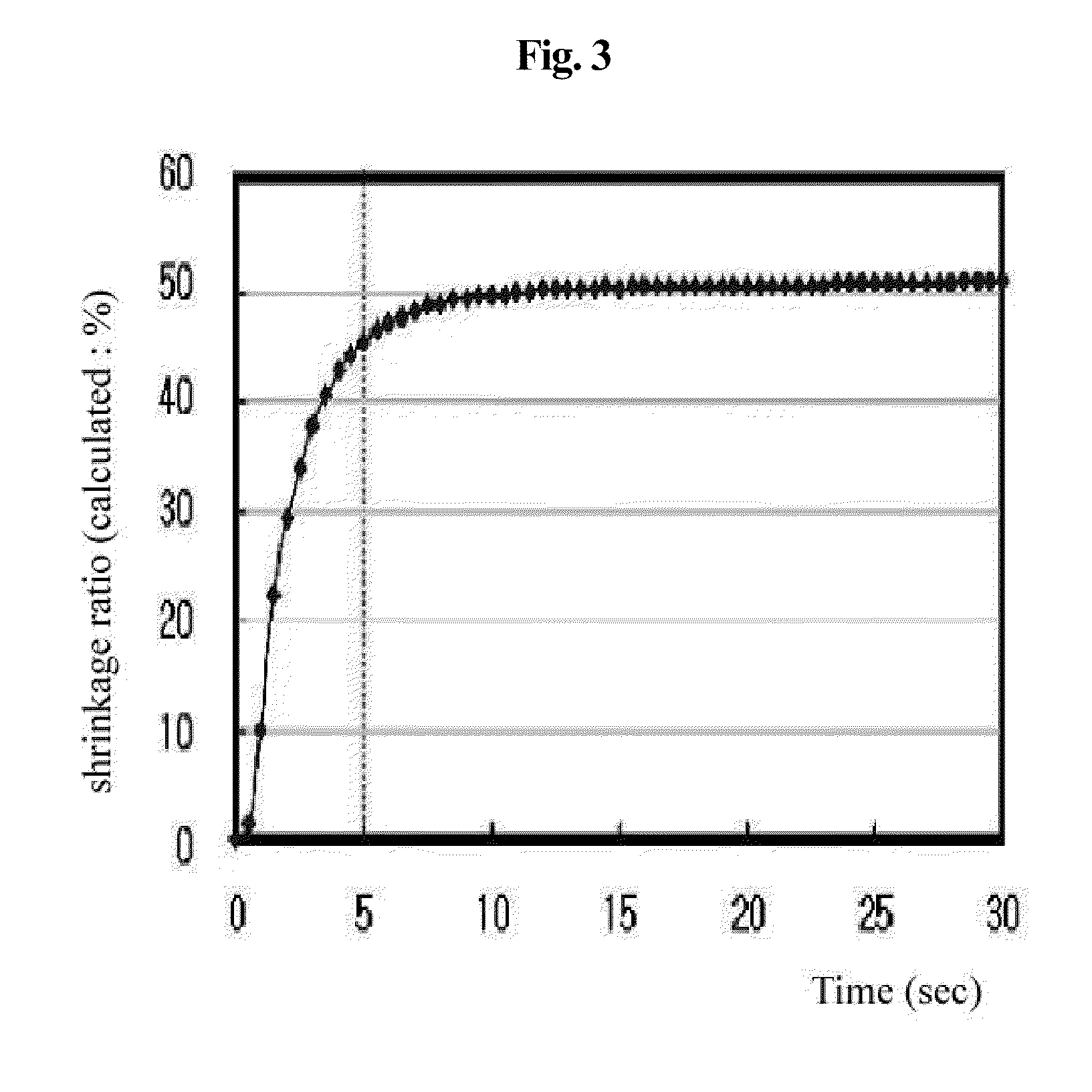Thermo-shrinkable polyester film
- Summary
- Abstract
- Description
- Claims
- Application Information
AI Technical Summary
Benefits of technology
Problems solved by technology
Method used
Image
Examples
example 1
[0171]100 mol % of terephthalic acid as a dibasic acid component, 100 mol % of ethyleneglycol and 24 mol % of neopentylglycol as glycol components, and 0.05 mol antimony trioxide (for the acid component) as a catalyst were polycondensed through direct esterification. The polymer thus obtained was added with 500 ppm silicon dioxide powder having an average particle size of 2.7 μm and then dried through a typical process, thus preparing copolyester having an intrinsic viscosity of 0.67 dl / g and a glass transition temperature of 76° C.
[0172]Separately, 100 mol % of terephthalic acid, 100 mol % of 1,4-butanediol, and 0.015 parts by weight of tetrabutyltitanate as a catalyst were polymerized, thus obtaining polybutyleneterephalate (intrinsic viscosity 0.97 fl / g, glass transition temperature 30° C.).
[0173]90 wt % of the copolymer and 10 wt % of the polybutyleneterephalate were blended, extruded using an extruder at 280° C., rapidly cooled and then solidified, thus obtaining an unstretched...
example 2
[0175]An unstretched film obtained in the same manner as in Example 1 was used.
[0176]The unstretched film was stretched in MD at a stretch ratio of (natural stretch ratio+0.5%) in the course of passing it through a stretching roller having a natural stretch ratio of 3% in MD, and then subjected to the same procedures as in Example 1, thus obtaining a thermo-shrinkable polyester film having a thickness of 50 μm. The properties of the film are shown in Table 1 below.
example 3
[0177]An unstretched film obtained in the same manner as in Example 1 was used.
[0178]A thermo-shrinkable polyester film having a thickness of 50 μm was obtained in the same manner as in Example 1, with the exception that the unstretched film was passed through the roller moving in MD, preheated at 95° C., and then stretched 4.0 times the width thereof at 87° C. The properties of the film are shown in Table 1 below.
PUM
| Property | Measurement | Unit |
|---|---|---|
| Temperature | aaaaa | aaaaa |
| Temperature | aaaaa | aaaaa |
| Temperature | aaaaa | aaaaa |
Abstract
Description
Claims
Application Information
 Login to View More
Login to View More - R&D
- Intellectual Property
- Life Sciences
- Materials
- Tech Scout
- Unparalleled Data Quality
- Higher Quality Content
- 60% Fewer Hallucinations
Browse by: Latest US Patents, China's latest patents, Technical Efficacy Thesaurus, Application Domain, Technology Topic, Popular Technical Reports.
© 2025 PatSnap. All rights reserved.Legal|Privacy policy|Modern Slavery Act Transparency Statement|Sitemap|About US| Contact US: help@patsnap.com



